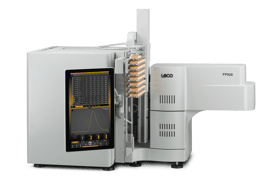 Year after year, the popularity of juice continues to rise. As consumers become more health- and environmentally-conscious, juice has risen to the forefront as a sustainable, vegan, and nutritious beverage option. It certainly doesn't hurt that with the pandemic, people have shifted to entertaining at home and making their own mixed drinks with juices as mixers. But how does juice actually hold up to nutritional demands?
Year after year, the popularity of juice continues to rise. As consumers become more health- and environmentally-conscious, juice has risen to the forefront as a sustainable, vegan, and nutritious beverage option. It certainly doesn't hurt that with the pandemic, people have shifted to entertaining at home and making their own mixed drinks with juices as mixers. But how does juice actually hold up to nutritional demands?
Fruit juice alone does not usually check all of the nutritional boxes. Some sugar-filled juices have actually been losing popularity, as evidenced by PepsiCo selling off their Naked and Tropicana investments. The juices that are growing in popularity have been the ones that introduce vegetables and other nutritional additions to their mix while maintaining light and fruity flavors.
One huge spike in demand has been for light, dairy-free drinks high in protein. Plant-based proteins are seen as a more sustainable and humane alternative to animal-based proteins for more than just meat substitutes. Adding protein to a juice requires a lot more than just saying there is protein included.
 One important step in the juice-making process is measuring just how much protein is present in the juice. This is a form of quality control and process monitoring, as well as required for nutritional labels and claims. It's a task made easier with instruments such as LECO's FP928 Nitrogen/Protein Analyzer.
One important step in the juice-making process is measuring just how much protein is present in the juice. This is a form of quality control and process monitoring, as well as required for nutritional labels and claims. It's a task made easier with instruments such as LECO's FP928 Nitrogen/Protein Analyzer.
Learn how the FP928 can rapidly and accurately determine the protein in your juice samples with this application note.

